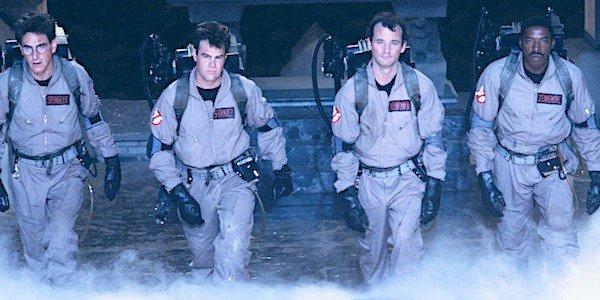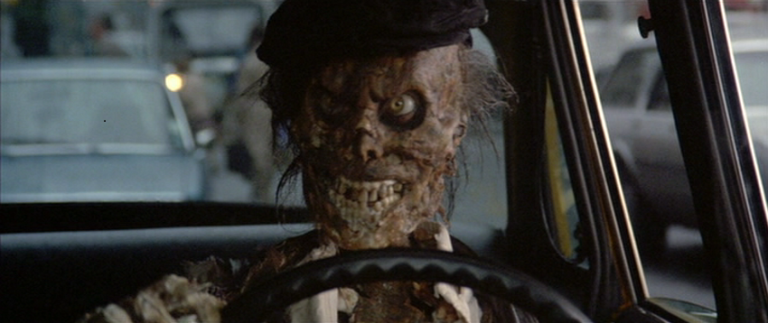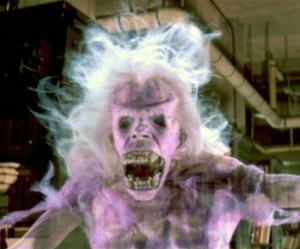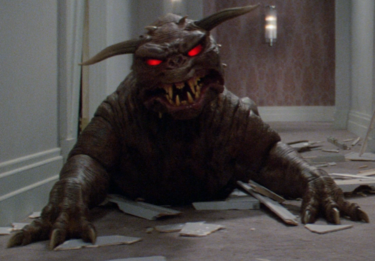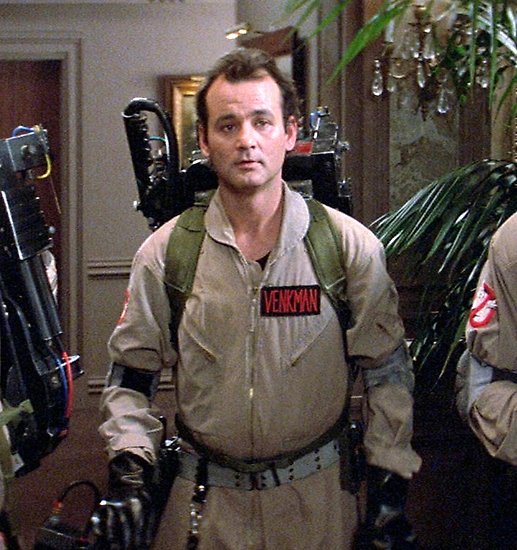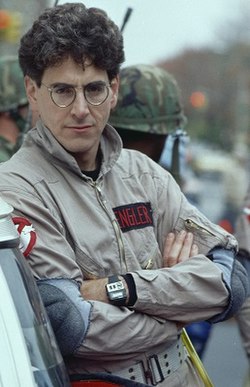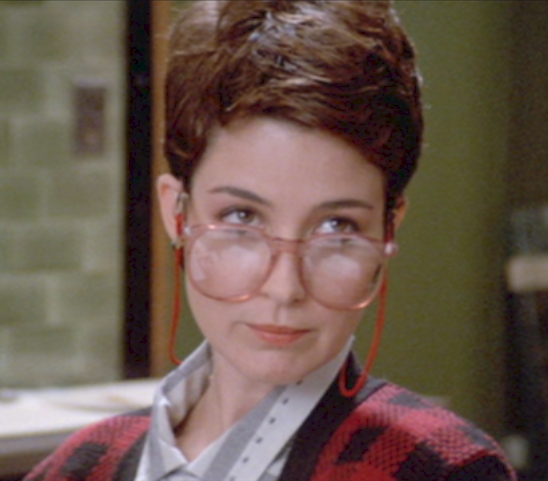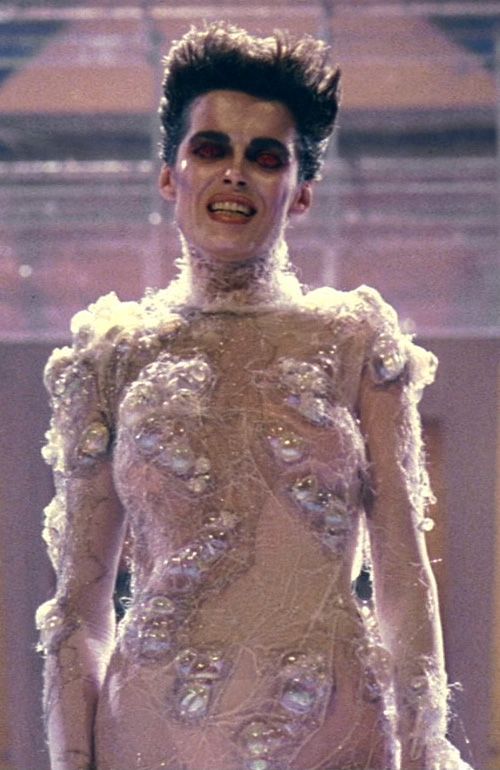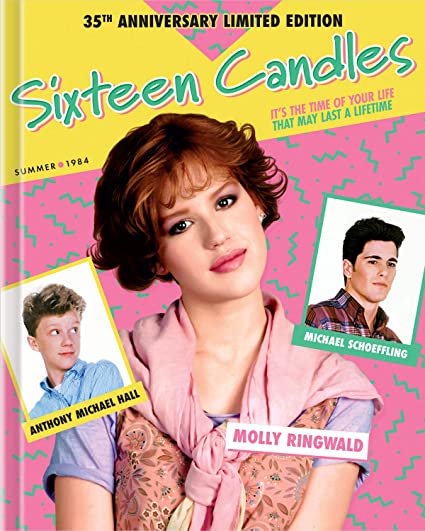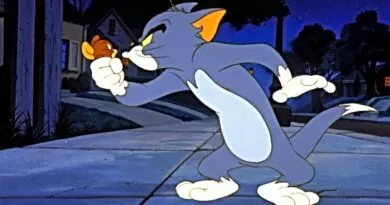Why Was Ghostbusters So Popular?
When there’s something strange, in your neighborhood…Who you gonna call? You know exactly who! The Ghostbusters were one of the major icons of 80s pop culture. Even today’s kids are familiar with the movie. It’s entertaining, humorous and incredibly well written! There were television shows, merchandise, comic books, food, and of course, movie series centered around the paranormal, comedy horror film. There’s also one coming out in the fall of 2021!
Surely the advertising blew it up, but promotions can only go so far. So what made it so amazing? Why were there so many toys, TV shows, merchandise and movies based on it? Why was it so popular? Well…
Why Ghostbusters Was So Popular
Ghostbusters was popular due to the following:
- The storyline is unique, well written and unlike any other in the paranormal activity category
- It was the first comedy film to employ expensive special effects
- It incorporated a diverse blend of comedy, action and horror themes
- It featured major actors including Bill Murray, Dan Aykroyd, Harold Ramis, Ernie Hudson, Sigourney Weaver, Annie Potts, Rick Moranis, William Atherton and David Margulies
- The theme song was a number-one hit and incredibly catchy
So there you have it. Ghostbusters had so many factors that made a large impact on its success as it will go down in history as one of the best films ever created. Here are some more details of each reason on what made it so popular.
1. Unique Storyline
Can you think of any other movie like Ghostbusters? I certainly can’t. Come to think of it, can you think of any other story where people try to catch ghosts? Usually they just run away or figure out a way to release them (ahem, Poltergeist). They incorporated some humor and made it appealing to multiple audiences, such as the scene where Venkman shot the beam at the “Slimer” ghost in the hotel hallway, scaring the daylights out of the housekeeping lady. “What the hell are ya doin?!” (That was my favorite scene!)
But it’s pretty rare that a successful movie can include both humor and horror within the storyline that make it more appealing for multiple audiences. I still see it as more humorous, but only because I’m a scary movie buff.
The movie first began with Dan Aykroyd, Harold Ramis and Ivan Reitman writing the script, first at Reitman’s office and then in Martha’s Vineyard in Massachusetts. Aykroyd owned a home there as they worked for two weeks in his basement. Finally in mid-July 1983, they had a nearly finished script ready to go before cutting out a few scenes. They later met Bill Murray in New York after his filming of The Razor’s Edge (1984). Bill gave them his input as they made the final adjustments, deciding that Ramis’ character would be the brains of the movie, Aykroyd’s was the heart and Murray’s was the mouth, and indeed they were!
Aykroyd said he got his inspiration from Hollywood archetypes of Wizard of Oz, comparing Peter Venkman, Raymond Stantz and Egon Spengler to the Scarecrow, the Lion and the Tin Man. Aykroyd wanted each actor to choose their own personalities for their characters and “make their own destinies”. So Venkman was the cool, modern salesman, Stanz was the honest, enthusiastic technician and Spengler was the factual, stoic intellectual.
They explained the most challenging part was identifying the goal of the storyline, the villain, why the ghosts were manifesting and how to incorporate the Stay Puft Marshmallow Man.
The Marshmallow Man was actually one of Aykroyd’s initial creatures to be included in the film, first emerging from the East River just twenty minutes into the movie. But it concerned Reitman due to the realistic theme for which they were striving, so they put it towards the end.
2. Expensive Special Effects
What better to make the storyline more real than the best special effects? At the time, they were the best in the industry, however, all the major special effects studios were booked with other films, such as Indiana Jones and the Temple of Doom (1984) and Return of the Jedi (1983). The rest of the studios were not big enough to handle the 630 effects shots needed for Ghostbusters. But Richard Edlund was planning to leave one of the major companies, Industrial Light and Magic (ILM) to start his own business. When he met up with Reitman, he convinced Columbia to work with Metro-Goldwyn-Mayer (MGM), which also needed their special effects studio and advanced Edlund $5 million to start his own company, Boss Film Studios and invest in the equipment.
Short Filming Schedule
Unfortunately, there was a time constraint as the lawyers used up much of the setup time to finalize the contract and left only ten months to build the studio itself, shoot the scenes and composite the images. The Boss Film Studios’ team was split up to work on both Ghostbusters and another movie, 2010: The Year We Make Contact. The $5 million effects also came in at $700,000 over budget and the strict schedule forced the cast to do the majority of the effects shots in one take.

Slimer Ghost
When creating the supernatural creatures, Edlund already had experience working on the ghosts from Poltergeist (1982) and used it as a reference for the ghost designs in Ghostbusters. Associate producer, Michael C. Gross mentioned it was difficult to create ghosts that came off as both scary and comical to match the film’s theme.
A special effects artist, Steve Johnson was responsible for creating the slimy, green ghost known as the “Onion Head ghost” in the hotel, now known as “Slimer” from the 1986 animated TV series, The Real Ghostbusters. His design took about six months and $300,000 to finish.
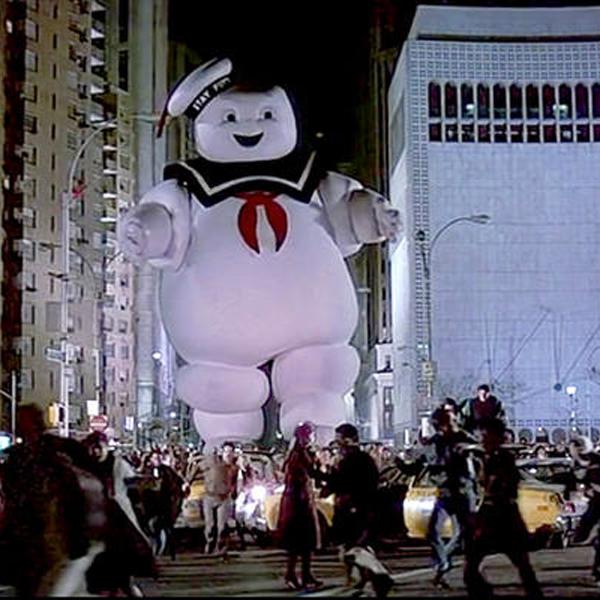
The Marshmallow Man
Dan Aykroyd chose his friend, known as the Viking, to design the Marshmallow Man, combining both the Michelin Man and the Pillsbury Doughboy in a sailor hat. He was portrayed by the actor and special effects artist Bill Bryan who also modeled on Godzilla. There were a total of 18 foam suits, each of them costing between $25,000 and $30,000 and 17 of them were burned during filming.
Bryan had to use a separate air supply due to the toxicity of the foam. There were also three different heads built from foam and fiberglass, each with their own expressions that were moved using cable mechanisms. The costume was then filmed against scale models.
The marshmallow effect that rained down on the crowd was actually shaving cream, 150 lbs of it to be exact. The weight of it knocked down a stuntman, so they decided to go with 75 lbs. Although the cream ended up giving rashes to some of the cast after wearing it for several hours.
Zombie Cab Driver Puppet
The Zombie Cab Driver was only puppet shot in New York City. It was based on a reanimated corpse puppet the special effects artist Steven Johnson had made for An American Werewolf in London (1981).
Library Ghost
Both he and actor Mark Wilson collaborated on the Library Ghost in which they created the puppet that was operated by tens of cables running through the torso that controlled the head, arms and rubber skin away from the torso to turn it into a monstrous ghost.
The original Library Ghost puppet was considered to be too scary for younger audiences and was instead used in Fright Night (1985). The Library scene was done in three takes, with the camera crew blowing air through copper pipes to blow the cards into the air, which had to be collected and reassembled for each take. The floating books were hung on strings.
Zuul and Vinz (Gozer’s Minions)
Randy Cook created the stop-motion puppets for the ghost dogs, Zulu and Vinz. The model was both heavy and unwieldy and took almost thirty hours to film while moving it across a 30-foot stage for the scene where it chased after Louis Tully across the street.
When Dana was pinned to her chair and pulled to the lit doorway, Reitman said he was inspired by Close Encounters of the Third Kind (1977), using a rubber door to allow distortion as if something was coming through it and grips hidden by a trapdoor underneath the chair burst through while wearing the dog-leg gloves.
All other non-puppet ghosts had to be animated and took almost three weeks to create a second of footage. For the character of Gozer, Slavitza Jovan wore red contacts that were painful to wear and was strapped into a harness to move around the set.

3. Blend of Comedy, Action, and Horror Themes
There aren’t many films out there that go for comedy, action and horror. In fact these themes made the film that much more challenging to produce. Some even said it was impossible to incorporate both and have the audience take the film seriously.
Nevertheless, the film was inspired by Dan Aykroyd’s fascination with and belief in the paranormal, where he was influenced by:
- His father’s writing of the book A History of Ghosts
- His mother who had claimed she’d seen ghosts
- His grandfather who had experimented with radios to contact the dead
- His great-grandfather who was a renowned spiritualist
Aykroyd was also inspired after reading an article on quantum physics and parapsychology in The Journal of the American Society for Physchical Research, where he got the idea of trapping ghosts. At the same time, he was also fascinated with the idea of modernizing the comedic ghost films of the mid-20th century like Hold That Ghost (1941), The Ghostbreakers (1940) and Ghost Chasers (1951).
When Aykroyd started to write the script, he originally thought of Eddie Murphy and John Belushi to star in it, just before Belushi’s accidental death in 1981. Nevertheless, he pitched it to his agent, Bernie Brillstein, who claimed it sounded like a group of pest control contractors who were called in to remove rats. So Aykroyd called on Ivan Reitman to direct the movie, because of his work with Animal House (1971) and Stripes (1981).
When Reitman first met with Aykroyd in Studio City, Los Angeles, he claimed the concept would be impossible. But still, he took on the challenge, suggesting the setting be filmed on Earth to make the ghosts more humorous and realistic as well as putting the Marshmallow Man at the end to make it more believable.
To fund the film, Reitman pitched the story to Frank Price at Columbia Pictures in March 1983, which he said the concept was funny but controversial. There was also the fact that comedy films had a lower profit margin. Eventually, they settled on a budget of $25-$30 million and 13 months to film the movie with no script, effects studio, or films start date.
4. Major Actors
Peter Venkman
While Aykroyd was one of the main characters, it was Bill Murray who was designated to make the film successful. Although he had a reputation for not committing to films until the last minute. To help Murray commit, Reitman agreed to fund his passion project The Razor’s Edge, believing he wouldn’t lose much money if he failed.
Egon Spengler
Other characters considered for the character Egon included:
- Christopher Walken
- John Lithgow
- Christopher Lloyd
- Jeff Goldblum
But Ramis said he was inspired by a journal’s cover of an abstract architecture, featuring a man wearing a three-piece tweed suit, hair standing up and wire-rim glasses. He thought of himself as the best actor for the part.
Winston Zeddemore
Associate film producer Joe Medjuck was in charge of casting the other roles, going through five auditions with Ernie Hudson before choosing him to play Winston Zeddemore. Although originally Winston was scripted for a larger role, he was given a largely reduced role as Reitman told him he wanted more of Bill Murray in the film.

Dana Barette
Julia Roberts almost played Dana Barrett, however, Sigourney Weaver was thought to be the better fit due to her more serious roles in Alien (1979) and The Year of Living Dangerously (1982). To solidify her spot, she explained her comedic background which was developed at the Yale School of Drama and began walking on all fours and howling like a dog. Weaver also suggested that Dana be possessed by the demonic dog, Zuul. She also changed the character’s role from a model to a musician, explaining she can be a bit strict, but still has a soul because she plays the cello.

Louis Tully
At first, John Candy, who was originally offered the role of Louis Tully, told Reitman he didn’t understand the character and suggested using a German accent with multiple German Shepherds instead, but the crew said there were already enough dogs in the film. They agreed to pass on the film.
Reitman then found Rick Moranis from their work together in Toronto and sent him the script, where he accepted an hour later. Moranis was able to take on many of Tully’s aspects, such as being an accountant and the annoying neighbor who doesn’t stop talking.
Janine Melnitz (The Secretary)
Sandra Bernhard was originally offered the role of the Ghostbuster’s secretary, Janine Melnitz, but turned it down. So it was given to Annie Potts. As soon as she arrived, Reitman immediately rushed her into the movie, where she changed out of her street clothes and borrowed a pair of glasses from the set dresser, which she ended up incorporating into her character throughout the film.
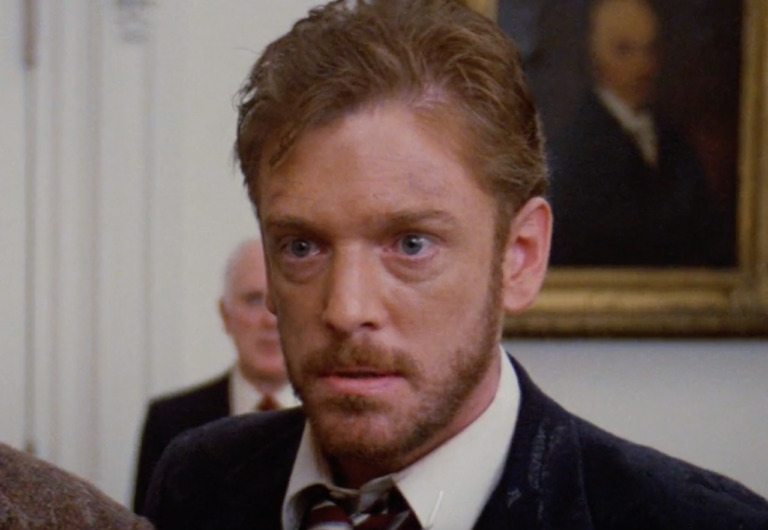
Walter Peck (EPA Hothead)
William Atherton was offered and had accepted the role of Walter Peck after appearing in the play Broadway. He first explained, “It can’t be funny, and I don’t find the Ghostbusters in the least bit charming. I have to be outraged.”
Gozer
The Sumerian god Gozer role was originally offered to Paul Reubens who was envisioned as a business-suited architect. But he turned it down and it was given to Yugoslavian actress Slavitza Jovan instead. The role was then changed into one inspired by the androgynous looks of David Bowie and Grace Jones. But Paddie Edwards was chosen to voice Gozer, due to Jovan’s strong Slavic accent.
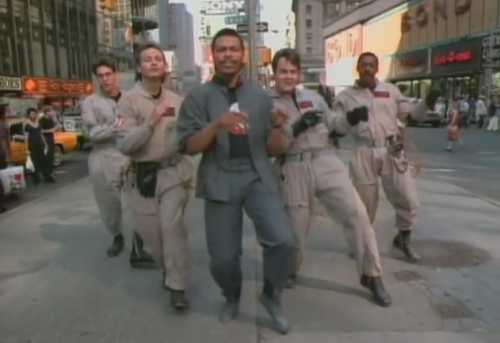
4. Theme Song
Originally, 50 - 60 different theme songs were developed by different artists before finding Ray Parker’s song, “Ghostbusters”. For a while, it was “Magic” by Mick Smiley, which was played when the ghosts were released from the Ghostbusters headquarters.
Bernstein also commented that he personally disliked the use of the songs, specifically with “Magic”, but said it’s hard to argue when something like “Ghostbusters” was in the top ten on the charts.
Huey Lewis was also originally chosen to compose the film’s theme but was already working on Back to the Future (1985) at the time.
Awards
After much debate, collaboration and editing, Ghostbusters was made into an amazing film that was nominated for two Academy Awards in 1985: Best Original Song for “Ghostbusters” and Best Visual Effects for John Bruno, Richard Edlund, Chuck Gaspar and Mark Vargo.
It was also nominated for three Golden Globe Awards: Best Motion Picture - Musical or Comedy, Best Actor - Motion Picture Musical for Bill Murray and Comedy and Best Original Song for Parker Jr.
But it did win the BAFTA Award for Best Original Song and Best Fantasy Film at the 12th Saturn Awards. Edlund was also nominated for the Special Visual Effects BAFTA Award.
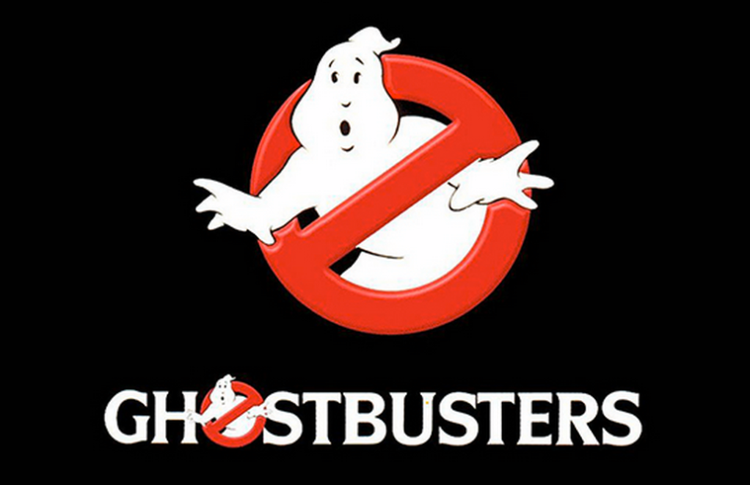
Conclusion
With various nominations and BAFTA and Saturn Awards, Ghostbusters was simply an incredible movie that made a huge impact on the 80s pop culture. Even almost 40 years later, there’s a new one coming out with the original characters (can’t wait)!
But there you have it. There were numerous factors that made Ghostbusters popular, deeming it one of the most successful films in history (at least in my opinion).
So let’s hear from you! What did you enjoy most about Ghostbusters? What made it so special? I’d love to hear your thoughts in the comments below!

